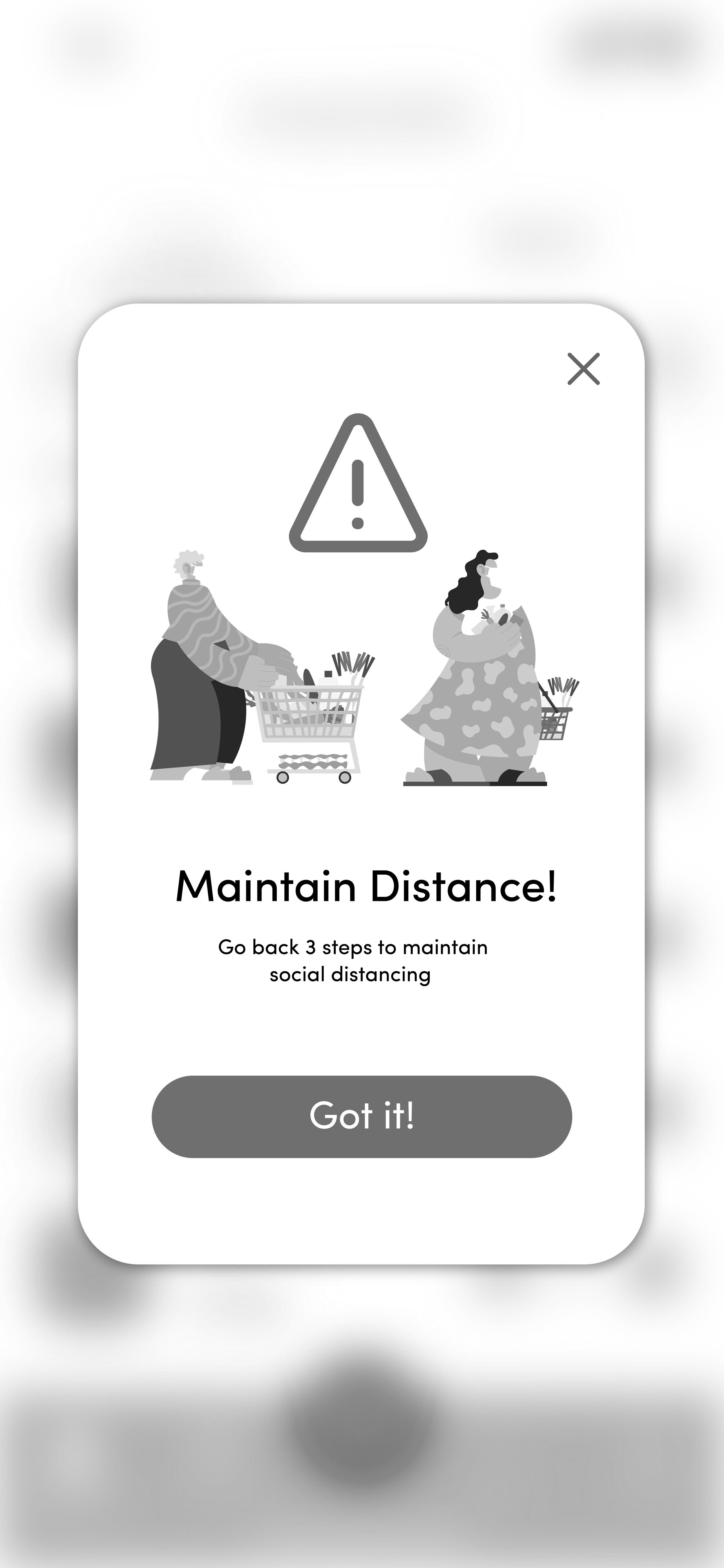shopbubble
Rethinking in-store Grocery shopping
user experience for the new normal
Remember when grocery shopping meant casually strolling on a Sunday afternoon to look for ingredients for that pasta dish you saw online? Not anymore. Long waits, social distancing & panic-buying are the reality of grocery shopping now. Online grocery shopping has increased by 10% in usage. However, with longer delivery wait and understaffed deliveries; in-store grocery shopping is still emerging as an important need. This need propelled me to research & design digital solutions that make our analogue world better & safer.
My Role
As the only designer for this project - I led the research, user insight identification, and visual design. I conducted user interviews, identified key tasks and produced wireframes, prototypes.
Challenges & Goals
Shopbubble aims to provide users with a safer, efficient & comfortable grocery shopping experience.
Minimise contact
Create a 'journey route' that is faster & efficient.
Regulate safety measures through alerts & reminders.
Competitor Analysis
By doing an analysis of all the features that shopbubble’s competitors have, it provided great insight into what features need to be included for the solution. Since shopbubble doesn’t have a direct competitor, similar brands providing efficient grocery shopping experience have been used for reference.
User Insights
Based on the competitor analysis, user interviews were conducted to gain deeper insight into the user’s needs & wants. Around 10+ users were interviewed with varied backgrounds to understand if there is any need to have this product.
53% of users felt they couldn’t afford to wait longer for delivery times nor able to pay minimum home delivery fee every time.
76% of users are adjusting their shopping habits due to the pandemic.
10% increase in online grocery shopping.
Based on these user interviews, two user personas were created to address the key user insights.
User Personas
User personas help provide deeper understanding into user’s motivations, behaviours and needs. Moreover, it helps to empathise with the target users and aligning the product’s goals with the user’s needs. These two personas were created based on the user interviews and key user insights.
Red Routes
Red routes are critical as they deliver the most value to the users. It also helps streamline the design process in order to ensure the user’s are not bombarded with excessive features that distract them from the main functionality.
Wireframing
Quick iterative sketches can help to understand the UI of the product which can be used as the base to build the prototype in order to conduct user testing.







Shopping List
User can make lists before the shopping trip. Based on the items availability, shopbubble will recommend the nearest grocery store.
Plan trip
User can also organise your shopping trip by selecting appropriate date & time based on estimated foot traffic and item availability.
Safety Alerts
Shopbubble alerts you on all safety precautions so the user can focus on getting the groceries efficiently.
Efficient Routing
In order to avoid back & forth, shopbubble will estimate the best route to take based on the items on the shopping list. If the user decides to add/remove items, it will automatically reroute.
Scan Products
The user can scan the products using the app to minimise contact with the cashier.
Online Payment
To take it a step further, the user can decide to pay in-app to fulfil their purchase. If they would like to pay cash, the app will route the way to the cashier.














